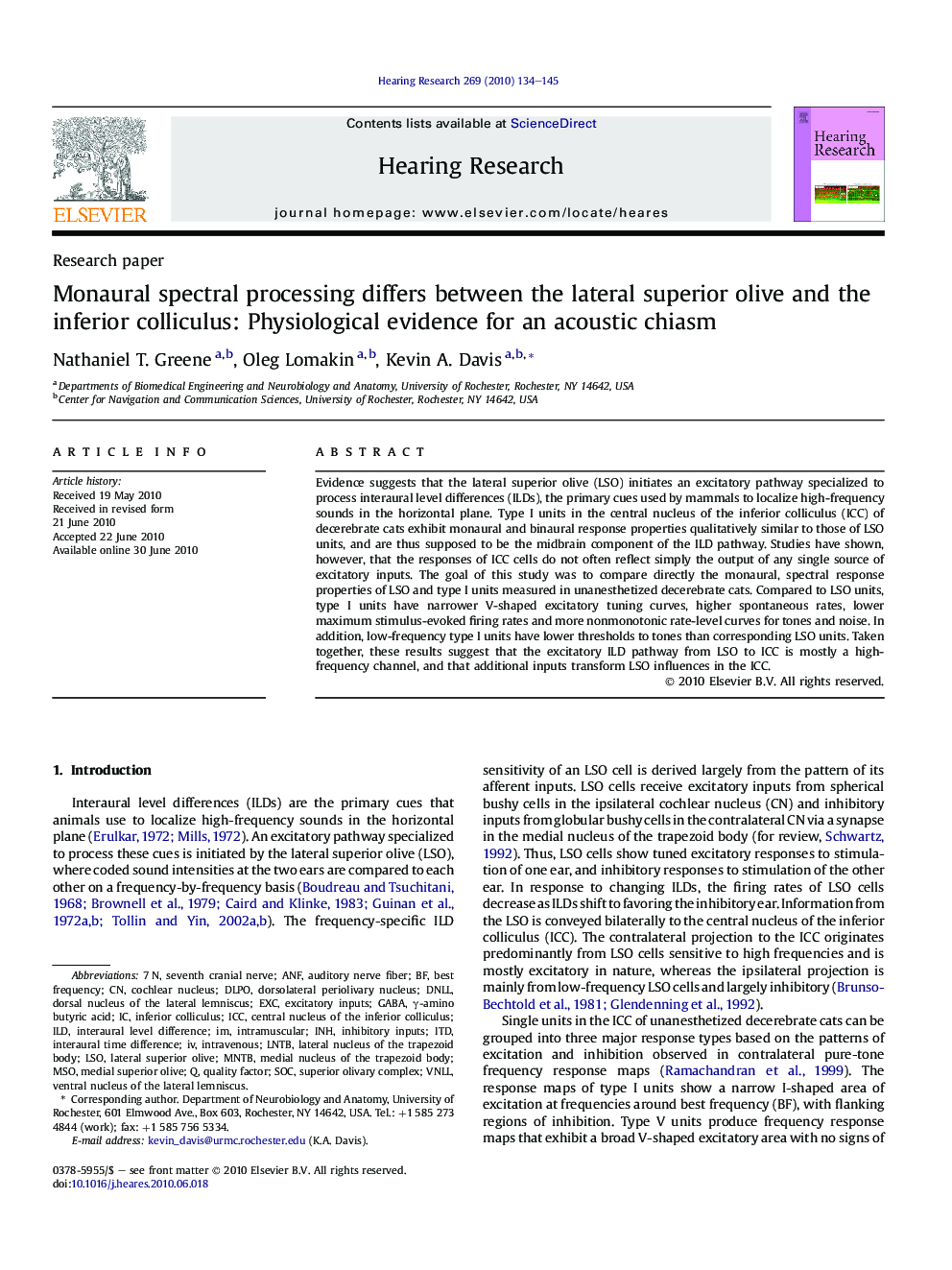| Article ID | Journal | Published Year | Pages | File Type |
|---|---|---|---|---|
| 4355654 | Hearing Research | 2010 | 12 Pages |
Evidence suggests that the lateral superior olive (LSO) initiates an excitatory pathway specialized to process interaural level differences (ILDs), the primary cues used by mammals to localize high-frequency sounds in the horizontal plane. Type I units in the central nucleus of the inferior colliculus (ICC) of decerebrate cats exhibit monaural and binaural response properties qualitatively similar to those of LSO units, and are thus supposed to be the midbrain component of the ILD pathway. Studies have shown, however, that the responses of ICC cells do not often reflect simply the output of any single source of excitatory inputs. The goal of this study was to compare directly the monaural, spectral response properties of LSO and type I units measured in unanesthetized decerebrate cats. Compared to LSO units, type I units have narrower V-shaped excitatory tuning curves, higher spontaneous rates, lower maximum stimulus-evoked firing rates and more nonmonotonic rate-level curves for tones and noise. In addition, low-frequency type I units have lower thresholds to tones than corresponding LSO units. Taken together, these results suggest that the excitatory ILD pathway from LSO to ICC is mostly a high-frequency channel, and that additional inputs transform LSO influences in the ICC.
Research highlights► The responses of LSO and ICC type I units are similar, but quantitatively different. ► The excitatory ILD pathway from LSO to ICC is mostly a high-frequency channel. ► Extra-olivary inputs transform high-frequency LSO influences in the ICC.
